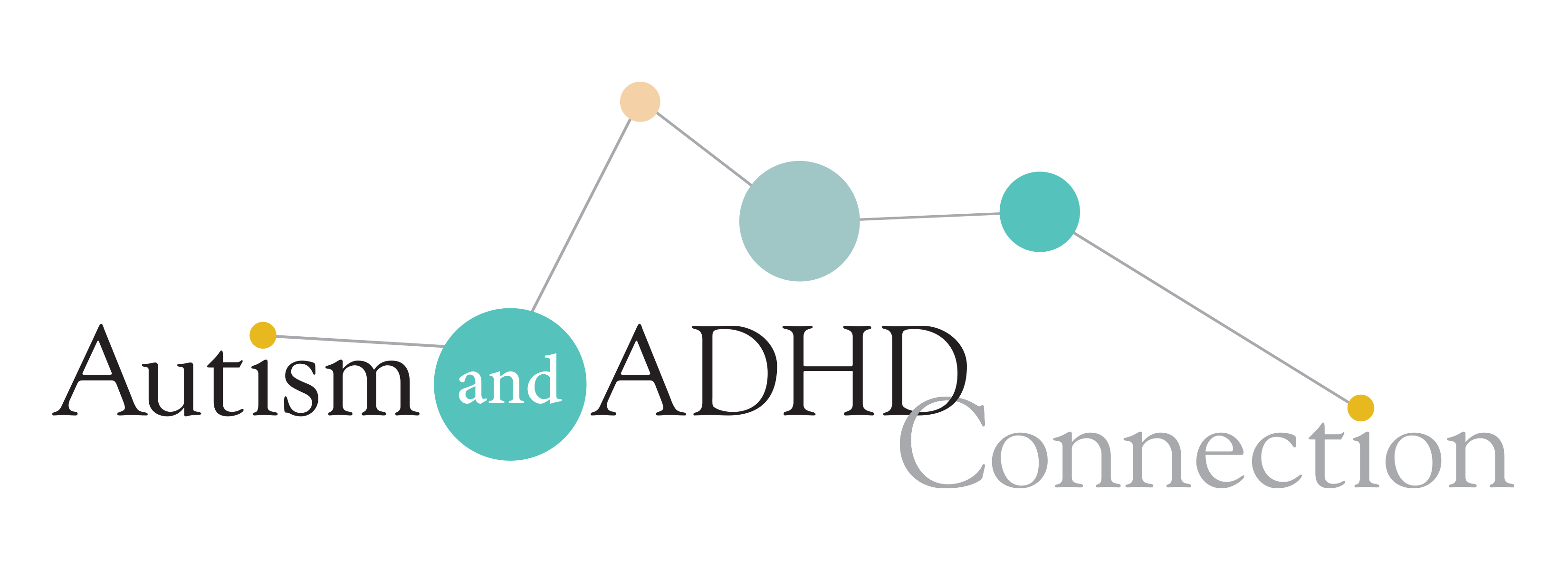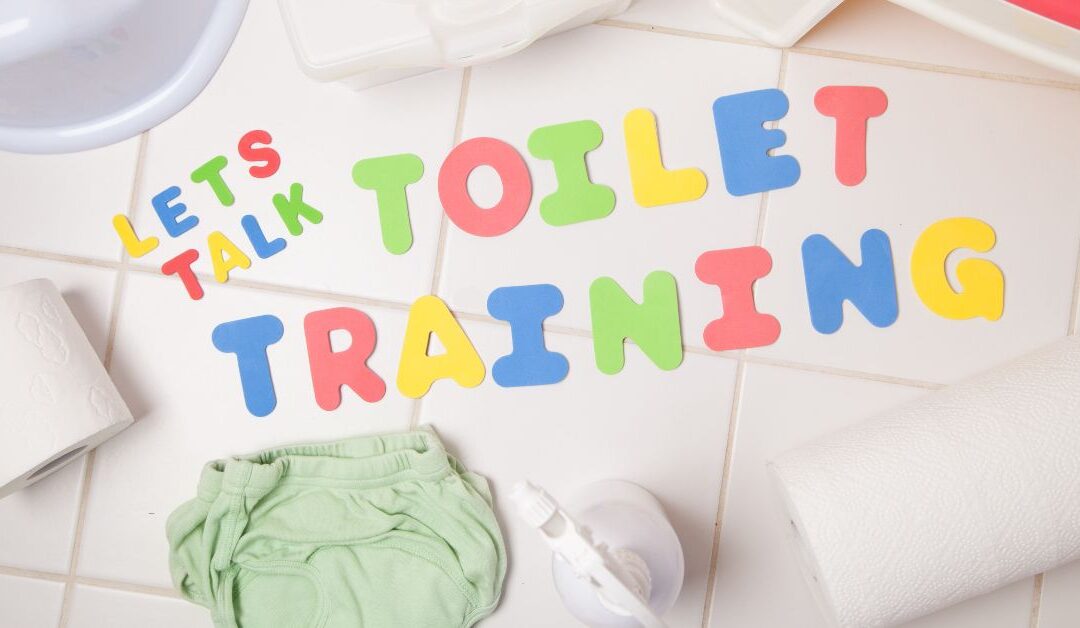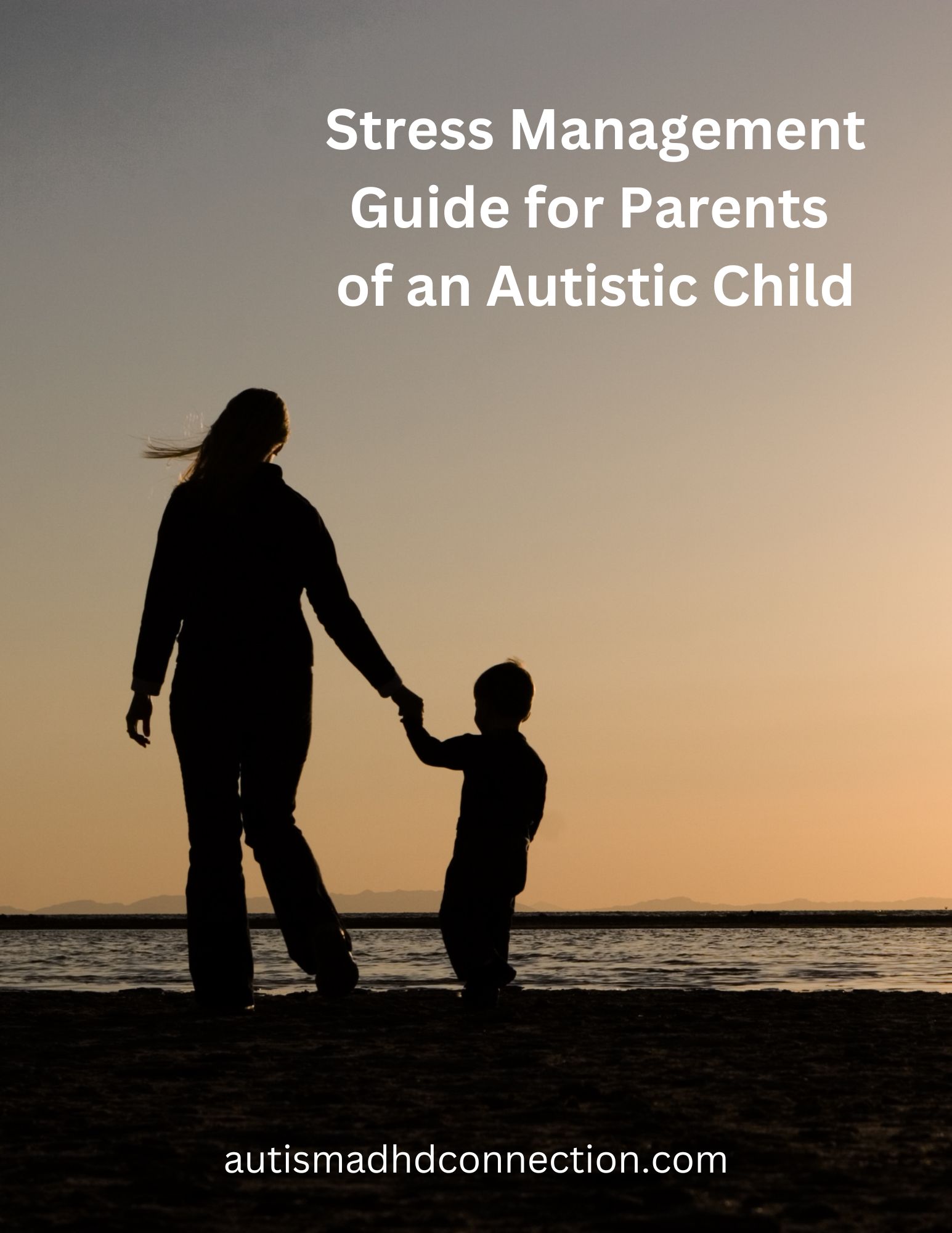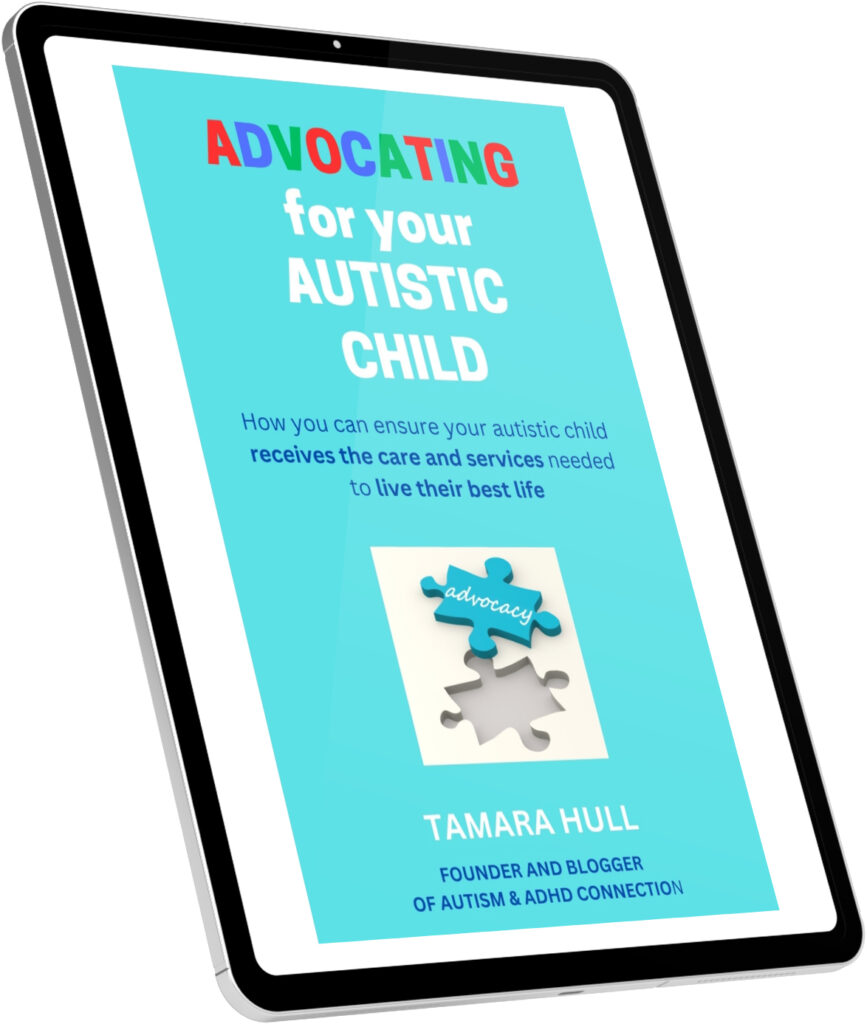Toilet training any child isn’t easy, but when your child has autism, it brings some additional challenges. However, you can overcome them and help your child be toilet trained – even if it may take a bit longer than a neurotypical child.
Why is toilet training a challenge for children with autism?
My autistic son J struggled with toilet training and wasn’t fully trained during the day until he was almost 4 years old. Night time training took much longer, and he struggled with bedwetting for many years.
Children with autism face many challenges when it comes to toilet training. Some of those can include:
- Development delays – they are just on a different timeline than many of their neurotypical peers when it comes to development milestones such as being toilet trained. Their gross and fine motor skills may take longer to fully develop.
- Communication issues – if your autistic child is non-verbal, then they may not know how to “tell” you that they can feel when they need to use the toilet.
- Cognitive issues – pull-ups and diapers do a great job of wisking away moisture, so they may not feel the effects of having peed. They may not understand their body sensations when they need to go pee or have a bowel movement.
- Sensory issues – some autistic children don’t like the sensory effects of using the toilet and cleaning up afterward, especially if they are somewhere other than their home. The school psychologist explained to me that to my son J (who had ultrahearing) that a loud flushing toilet in some public restrooms sounded like a 747 jet taking off to him. Other autistic children may not like the feel of a cold toilet seat, sitting on a training potty seat or even using toilet paper or wipes to clean up after having a bowel movement.
- Routines – other autistic children do not like to change their routines for toilet training. It takes time to sit on toilet and learn how to use it. That is a big change for many autistic children to adapt to at a young age.
- Anxiety – learning something new like toilet training can cause a lot of anxiety for some autistic children.
Signs that your autistic child is ready for toilet training
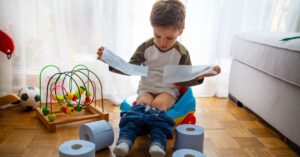
Autistic children generally show the same signs as a neurotypical child for toilet training readiness. Those can include:
- Knowing that their diaper is wet or soiled
- Telling you that they need their diaper changed
- Feeling the sensation that they need to pee or have a bowel movement
- Willing to sit and stay on the toilet without resisting it
- Keeping their diaper dry for at least two hours at a time
- Knowing how to pull pants and underwear up and down by themselves
- Showing interest in the toilet by sitting on it, flushing it or wanting to watch an adult use it
Ways to potty train your autistic child
So what are the steps you should take for toilet training your autistic child?
1. Make it easier with a separate child potty and potty training seat
First, make sure you have a child potty (affiliate link) that sits on your bathroom floor and a potty training seat (affiliate link) that fits onto your toilet. We had both for our son J, but then we transitioned fully to only the potty training seat on the toilet once he started to get the hand of peeing in the child potty.
The regular toilet seat is too big for our children’s little bodies, so a training seat is safer and makes most children feel more comfortable. When we would go to relatives’ or friends’ houses, I usually brought our training seat (of course, discreetly in a bag), so we had it for J to use when needed.
2. Invest in toilet training underwear
Getting eight to 10 pairs of the toilet training underwear (affiliate link) really helped with toilet training. Your child needs to be able to feel when the have an accident (and they will have them often at first), so these are very helpful to have. If you get enough them, then you don’t feel like you have to constantly do laundry.
3. Set times for sitting on the potty when first toilet training
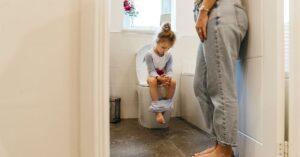
At first, it’s good to have your child sit on the potty several times a day for about 20 minutes each time. You’ll want to have a bin with some toys and books that they can have available while sitting there. Some experts say to have them sit on the potty every 20 to 30 minutes, but you know your child best and can determine the optimal times throughout the day. It may be helpful too to set a visual timer so that your child can see how much time they have on the toilet. My son J was very focused on time when he had to do something, so we used the Time Timer (affiliate link) when he was young for a lot of different things, including toilet training.
Once your child starts using the potty and better understands the sensations, you can lessen the time they need to sit on the toilet and instead rely more on when they feel like they need to go.
4. Encourage your child to drink a lot of liquids and eat salty foods
When you are in the focused period of your child first learning to toilet train, you will want to encourage them to drink a lot of liquids and eat salty foods so that they will need to pee more often. You can do this only for days when you will be focused on toilet training and have them sit on their potty frequently throughout the day.
5. Track progress
To be able to track progress of your child’s toilet training, it’s good to either create or purchase a tracking sheet (affiliate link). It’s helpful to know when your child sat on the toilet and when they peed or had a bowel movement.
6. Reward your child
Positive reinforcement does wonders when your child is first toilet training. Be sure to have a basket of fun little reward items (i.e., candy, small toys, coloring pages, note for extra time for something related to their special interest, etc.) that you can award for using the toilet. You know best what will motivate your child and what actions you should reward.
You can definitely use pull-ups or diapers during nap times and at night until they are using the toilet more consistently during the day. I also used pull-ups when we had to be out and about until my son J was a bit more advanced in his toilet training.
Overcoming the challenges of toilet training your autistic child

Autistic children many times will take longer to toilet train, and you may encounter some challenges with your child that you don’t expect. Here are some ways you can overcome these challenges.
1. Fascination with the toilet
Some autistic children become fascinated with the toilet by flushing it frequently, looking into the toilet and even wanting to play in the toilet water. For flushing and watching the toilet, you may need to close the door and put a stop sign on it, so your child doesn’t go into the bathroom unless they need to use the toilet.
If your child wants to play in the toilet water, set up a sink or water table outside for them for water play. If they continue wanting to play in the toilet water, then they may not be ready for toilet training.
2. Sensory issues
Who likes a cold toilet seat in the winter? Not many of us do, but most deal with it and get our business done. For an autistic child, that isn’t easy for them. Believe it or not, they make seat warmers for toilets. There are seat warmer cushions like these (affiliate link) or seat warming unit like this one (affiliate link).
Another frequent sensory issue for autistic children is the flushing sound. Some do not like it. If your child struggles with it, consider noise-cancelling headphones (affiliate link) for them.
Other autistic children struggle with wiping themselves after a bowel movement. Check out this article from an occupational therapist about techniques to teach your child perineal hygiene, or peri care. (Yes, effective cleaning and wiping after having a bowel movement does have a name!)
3. Constipation
Some autistic children will hold their bowel movement and refuse to have one unless they have a pull-up on. Others have medical issues that can lead to constipation. If this is the case with your child, it’s best to talk to your child’s doctor for advice on how to handle it. They will want to rule out any medical conditions that may cause constipation.
4. Poo incidents
Unfortunately, some autistic children become intrigued with their bowel movement and then want to play with it. Some even smear the poo on walls and other places in the bathroom. If this is something you are dealing with, talk to your child’s therapist, ABA therapist or occupational therapist to determine a behavior plan.
5. Use visual supports
To help your child with autism understand the process for toilet training, a visual support (affiliate link) can be very helpful to provide them the steps to follow.
6. Read social stories about toilet training
Reading social stories (affiliate link) or books (affiliate link) about toilet training can help your child with autism understand how and why they need to use the toilet.
7. Regression
At times, autistic children experience a regression in behaviors. This can include toilet training. If that happens, you may need to go back to the beginning to do some focused toilet training sessions to help them reset. If your child continues to have difficulty, you may need to take a break and start again later. Talk to your child’s doctor if the problem persists.
What has been your experience with toilet training for your child with autism? What worked for your child? Leave a comment below so that we can share and encourage each other on this journey.
Additional resources
Want additional help with toilet training your autistic child? Check out these resources.
Toilet Training for Individuals with Autism or Other Developmental Issues (affiliate link)
My Toilet Routine Cards 12 Flash Cards for Visual Aid Special Ed, Speech Delay Non Verbal Children and Adults with Autism or Special Needs (affiliate link)
Potty Training! ABA/OT Approved Step-by-Step Visual Schedules for Children (affiliate link)
Ready, Set, Potty!: Toilet Training for Children with Autism and Other Developmental Disorders (affiliate link)
Understanding Autism: Potty Training and Personal Care, Help You child Accomplish Basic Hygiene tasks (affiliate link)
